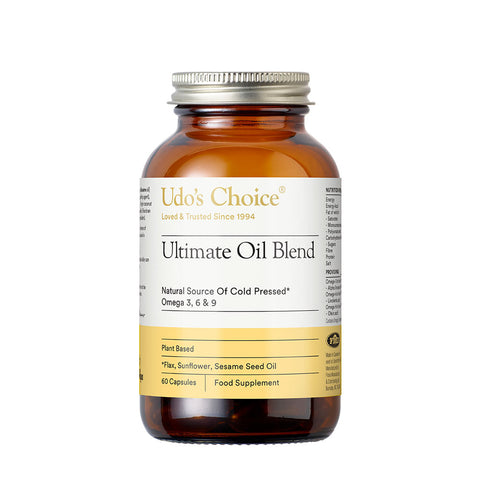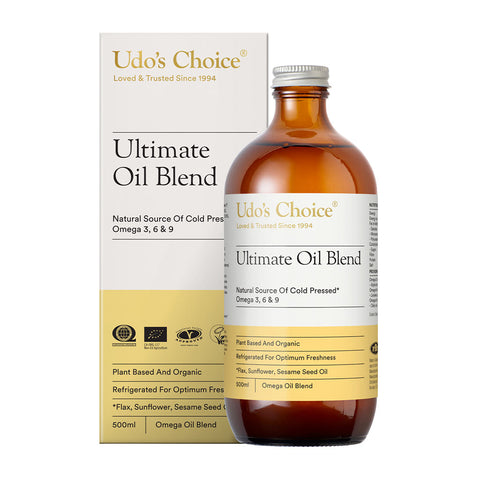We have been bombarded in the last few years with Omega 3 products. Fish oils, algae oil, krill oil, Omega 3 added to our supermarket ready meals, our children’s yogurts and many other variations.
The increase in marketing of Omega 3 products is based on scientific studies that show we are obtaining too little Omega 3 in our diets, particularly in the “West” and that we have far too much Omega 6 in our bodies.
Lack of Omega 3 in the diet is a concern because too little can lead to ill health with a wide range of symptoms, some of which are highlighted in the table below:
So upping our Omega 3 intake is good advice. However, we are told that Omega 6 is bad because we have too much of it and that because it competes with Omega 3 for the enzymes in our body we need to just up our intake of Omega 3. This misses three crucial elements in the whole business of Omega 3 and 6.
- It misses the fact that most of the Omega 6 we have in our diets is damaged
- It misses the fact that it is easy to overdo the Omega 3 intake and become Omega 6 deficient
- It misses the fact that we need enough of both Omegas for good health
Most Omega 6 in our diet is damaged
The UK population is said to have a ratio of Omega 6 to 3 in the region of 6:1 – some estimates put this as high as 10:1 meaning that our population is more prone to symptoms of Omega 3 deficiency. It is for this reason we are told that we should increase our Omega 3 intake in order to redress the balance. It is generally accepted that the ideal ratio of Omega 3 and 6 in the body should be closer to 1:1. So it seems logical to up our intake of Omega 3. However, if we consider that most of the Omega 6 sources we have are damaged the actual amount of undamaged, health giving Omega 6 which the cells in our body’s also need is lower and our ratio will be somewhat less than 6:1.
Today’s main sources of omega 6 are refined vegetable oils which can be found in:
- Cooking oils
- Vegetable spread
- Processed foods
- Peanut butter
- Mayonnaise
- Cereals
- Crisps
- Chocolate based confectionery
These refined oils have been processed heavily with harsh chemicals to ensure a long shelf life for the product. This leaves us in the situation where our Omega 6 intake is largely damaged by refining involving exposure to heat, oxygen and chemicals so that it actually becomes potentially harmful rather than beneficial to health. Our cells are not able to use the damaged Omega 6 so this can lead to symptoms of Omega 6 deficiency, particularly if we are supplementing with a lot of Omega 3.
It's very easy to become Omega 6 deficient when taking Omega 3 only supplements. Dr Udo Erasmus who pioneered the use of Omega 3 and 6 for health began by introducing a flaxseed oil to the market. Flax oil has an Omega 3 to 6 ratio of around 4 to 1 so was an excellent source of increasing our intake of Omega 3. However, he moved away from Flax oil as prolonged use of it led to the actual amount of Omega 3 in the body far outweighing the amount of Omega 6 and so leading to Omega 6 deficiency. Flax Oil is still very useful as a therapeutic source of Omega 3 when there are symptoms of Omega 3 deficiency but only for short term use – Dr Erasmus suggests usage for no longer than 3-6 months.
The same caution needs to be applied when taking fish oil supplements or foods supplemented with Omega 3. Too much in volume against the volume of Omega 6 can lead to Omega 6 deficiency.
The impact for health from omega 6 deficiency can be equally as dramatic as Omega 3 deficiency
So whilst it is important to ensure that we get enough Omega 3 we also need to obtain undamaged Omega 6 in our diet. Ideally we should try to replace the refined oils that we ingest with unrefined oils or wholefoods.
Good sources of undamaged Omega 6 include:
- Nuts
- Peanuts (which aren’t nuts of course!)
- Seeds
Getting enough of both Omega 3 and 6
It is not only the ratio that is important but the actual volumes of both Omega 3 and 6 in our diets.
Our western diets contain very little Omega 3 and as mentioned above relatively little undamaged Omega 6. For optimum health it is important for us to increase our intake of Omega 3 and swap our intake of damaged Omega 6 for undamaged Omega 6. Indeed, if we are increasing the volume of Omega 3 we may well need to also up our intake of Omega 6 in order not to become Omega 6 deficient.
It’s all too easy to fall short of even the minimum intakes required to maintain optimum health, let alone to produce any of the potential benefits that Omega 3 and 6 can bestow. This is of even more importance to people following a “low-fat” diet.
Low fat diets can lead to an even more dangerously low level of Omega 3 and 6 intake and again may lead to deficiency of both with possible resultant health issues.
Pioneers in the field of fatty acid nutrition, such as Udo Erasmus, recommend an additional intake upwards from 20g per day of undamaged Omega 3 and 9g of undamaged Omega 6 and reduce the amount of damaged Omega 6 refined oils that we use. This will bring the ratio of Omega 3 to 6 in the body closer to 1:1 whilst still ensuring that the body gets enough good quality Omega 6.
As it is hard for us all to measure this on a daily basis,Udo Erasmus developed a blend of Omega oils to make it easier for us to ensure we obtain our daily intake – he developed Udo’s Choice Ultimate Oil Blend from flax seed oil, sesame seed oil, sunflower seed oil, coconut oil, evening primrose oil, soy lecithin, rice bran and germ oils. Together these provide an Omega 3 to 6 ratio of 2:1 which when added to our existing diets will bring the ratio closer to the ideal 1:1, provide enough volume so that the cells in our body can function optimally and ensure that we don’t leave ourselves open to either Omega 3 or 6 deficiency.
In summary, it is important to increase our intake of Omega 3 as we are generally lacking these. However we also need to increase our intake of undamaged Omega 6 by swapping damaged refined oils with other good quality Omega 6 sources and ensure we increase our volume of both from current dangerously low levels.





